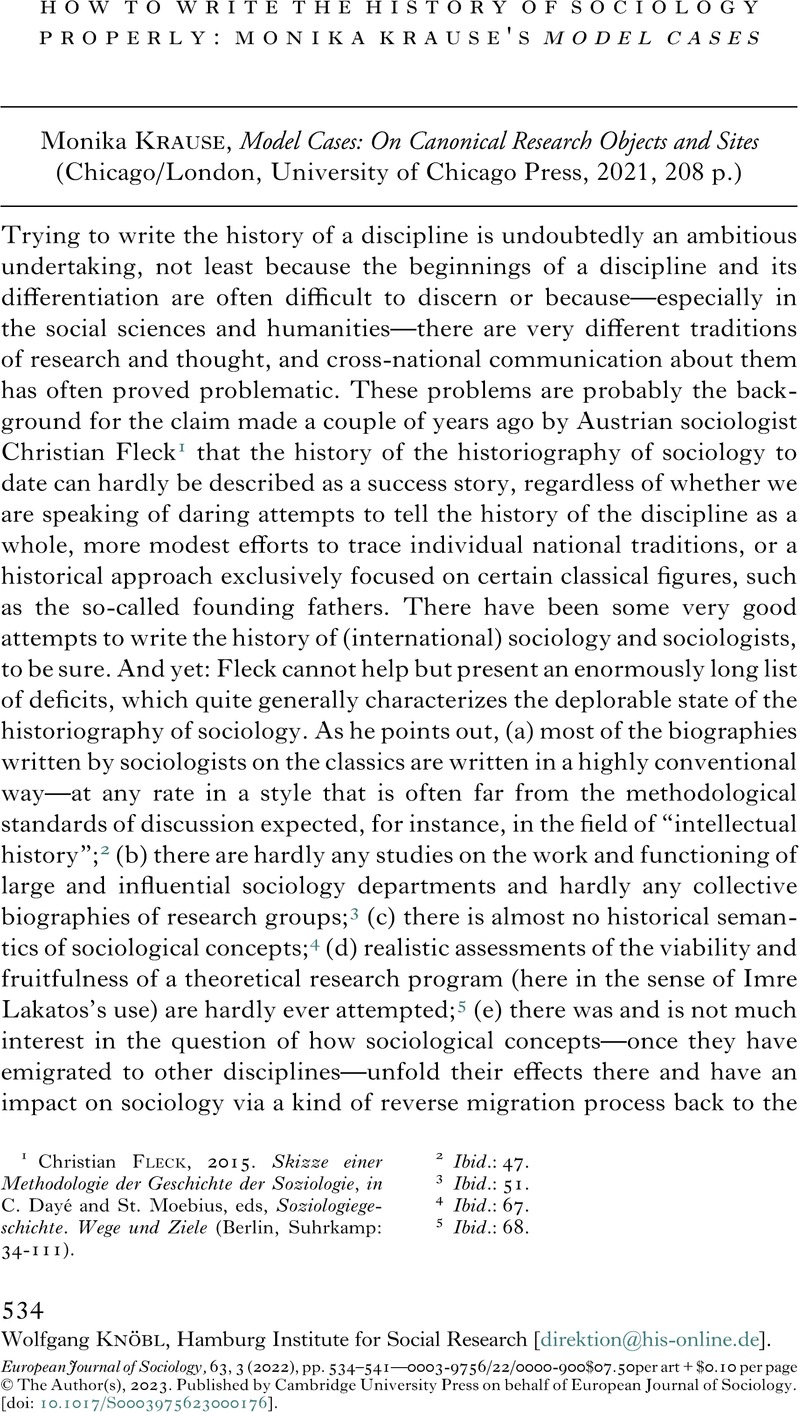No CrossRef data available.
Article contents
How to Write the History of Sociology Properly: Monika Krause’s Model Cases - Monika Krause, Model Cases: On Canonical Research Objects and Sites (Chicago/London, University of Chicago Press, 2021, 208 p.)
Review products
Monika Krause, Model Cases: On Canonical Research Objects and Sites (Chicago/London, University of Chicago Press, 2021, 208 p.)
Published online by Cambridge University Press: 21 February 2023
Abstract
An abstract is not available for this content so a preview has been provided. Please use the Get access link above for information on how to access this content.

- Type
- Book Review
- Information
- European Journal of Sociology / Archives Européennes de Sociologie , Volume 63 , Issue 3 , December 2022 , pp. 534 - 541
- Copyright
- © The Author(s), 2023. Published by Cambridge University Press on behalf of European Journal of Sociology
References
1 Christian Fleck, 2015. Skizze einer Methodologie der Geschichte der Soziologie, in C. Dayé and St. Moebius, eds, Soziologiegeschichte. Wege und Ziele (Berlin, Suhrkamp: 34-111).
2 Ibid.: 47.
3 Ibid.: 51.
4 Ibid.: 67.
5 Ibid.: 68.
6 Ibid.: 71.
7 Ibid.: 83.
8 Ibid.: 85.


